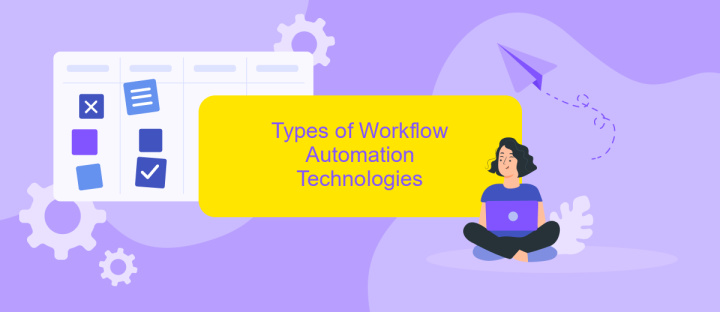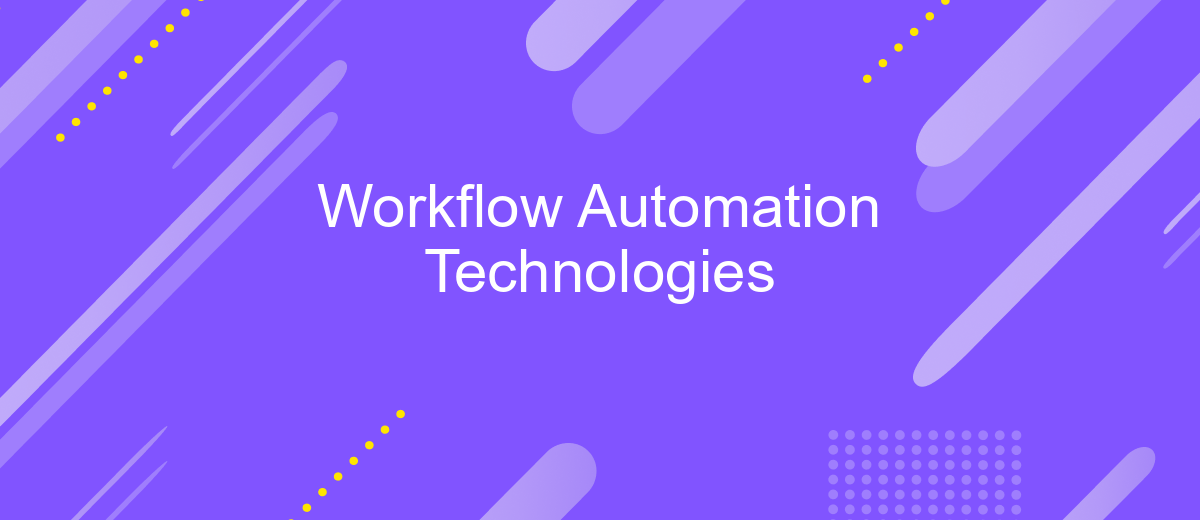Workflow Automation Technologies
In today's fast-paced business environment, workflow automation technologies have become essential for enhancing efficiency and productivity. By automating repetitive tasks and streamlining complex processes, these technologies enable organizations to save time, reduce human error, and focus on strategic initiatives. This article explores the latest advancements in workflow automation and how they are transforming industries across the globe.
Introduction
Workflow automation technologies are revolutionizing the way businesses operate by streamlining repetitive tasks and enhancing productivity. These technologies enable organizations to automate processes, reduce human error, and ensure consistency in operations. By integrating various tools and platforms, companies can achieve seamless workflows that save time and resources.
- Increased Efficiency: Automation reduces the time spent on manual tasks, allowing employees to focus on more strategic activities.
- Error Reduction: Automated workflows minimize the risk of human error, ensuring higher accuracy in repetitive tasks.
- Scalability: Automation solutions can easily scale with the growth of the business, accommodating increased workloads without additional staffing.
- Cost Savings: By reducing the need for manual intervention, businesses can lower operational costs.
One notable service that facilitates workflow automation through seamless integration is ApiX-Drive. This platform enables businesses to connect various applications and automate data transfer between them, simplifying complex workflows. By leveraging such tools, organizations can optimize their processes, leading to improved efficiency and productivity.
Benefits of Workflow Automation

Workflow automation offers numerous benefits that can significantly enhance the efficiency and productivity of any organization. By automating repetitive tasks, businesses can reduce human error, save time, and allow employees to focus on more strategic activities. This leads to improved accuracy and faster completion of tasks, ultimately boosting overall operational efficiency. Moreover, workflow automation provides better visibility into processes, enabling managers to monitor progress in real time and make data-driven decisions.
Another key advantage of workflow automation is its ability to streamline integrations between various tools and systems. Services like ApiX-Drive facilitate seamless connectivity, allowing organizations to sync data across platforms without manual intervention. This not only ensures data consistency but also helps in maintaining a unified workflow, reducing bottlenecks and enhancing collaboration across departments. By leveraging such automation technologies, companies can achieve greater scalability and adaptability in their operations, positioning themselves for sustained growth and success.
Types of Workflow Automation Technologies

Workflow automation technologies have revolutionized the way businesses operate by streamlining repetitive tasks and improving efficiency. These technologies can be categorized into several types, each designed to address specific needs and workflows.
- Rule-Based Automation: This type relies on predefined rules to automate tasks. It is ideal for processes that follow a consistent pattern, such as data entry or invoice processing.
- Robotic Process Automation (RPA): RPA uses software robots to mimic human actions. It is highly effective for automating routine tasks across various applications without changing the existing IT infrastructure.
- Integration Platforms: Services like ApiX-Drive facilitate seamless integration between different software applications, allowing businesses to automate workflows across multiple platforms effortlessly.
- Artificial Intelligence (AI) and Machine Learning (ML): These technologies enable more advanced automation by learning from data patterns and making intelligent decisions, suitable for complex tasks like customer support and predictive maintenance.
Choosing the right type of workflow automation technology depends on the specific requirements and complexity of the tasks at hand. By leveraging these technologies, businesses can enhance productivity, reduce errors, and focus on more strategic activities.
Choosing the Right Workflow Automation Technology

Choosing the right workflow automation technology can significantly impact the efficiency and productivity of your business. It's essential to evaluate your specific needs and objectives before making a decision. Consider factors such as ease of use, scalability, and integration capabilities.
One of the critical aspects to consider is how well the technology integrates with your existing systems and tools. Seamless integration ensures that data flows smoothly between different applications, reducing manual effort and minimizing errors. Tools like ApiX-Drive can be invaluable in this regard, offering a wide range of integrations with popular software platforms.
- Identify your workflow requirements
- Evaluate integration capabilities
- Consider user-friendliness and support
- Assess scalability and future needs
By carefully considering these factors, you can select a workflow automation technology that not only meets your current needs but also adapts to future growth. The right choice will streamline processes, enhance productivity, and ultimately contribute to the success of your business.
Implementation and Management of Workflow Automation
Implementing workflow automation requires a detailed understanding of the specific processes that need to be automated. The first step involves mapping out these processes to identify repetitive tasks that can benefit the most from automation. Once identified, suitable automation tools and platforms must be selected. These tools should be capable of integrating seamlessly with existing systems. For example, ApiX-Drive offers robust integration capabilities, enabling businesses to connect various applications and automate workflows efficiently. Proper configuration and testing are crucial to ensure that the automated workflows function as intended without disrupting ongoing operations.
Managing automated workflows involves continuous monitoring and optimization. It's essential to regularly review the performance of automated processes to identify any bottlenecks or inefficiencies. Feedback loops should be established to gather insights from end-users, which can be used to refine and improve the automation setup. Additionally, maintaining documentation and providing training for staff ensures that the team is well-equipped to handle any issues that may arise. By leveraging tools like ApiX-Drive, businesses can simplify the integration process and focus on optimizing their workflow automation strategies for maximum efficiency and productivity.
FAQ
What is workflow automation?
How can workflow automation benefit my business?
What types of tasks can be automated?
How do I get started with workflow automation?
Is it difficult to set up workflow automation?
Time is the most valuable resource in today's business realities. By eliminating the routine from work processes, you will get more opportunities to implement the most daring plans and ideas. Choose – you can continue to waste time, money and nerves on inefficient solutions, or you can use ApiX-Drive, automating work processes and achieving results with minimal investment of money, effort and human resources.

